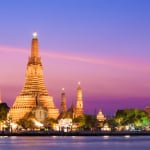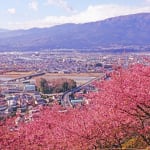Name: Tahrir Square (El-Tahrir Square)
Address: El-Tahrir Square, Qasr an Nile, Cairo, Egypt
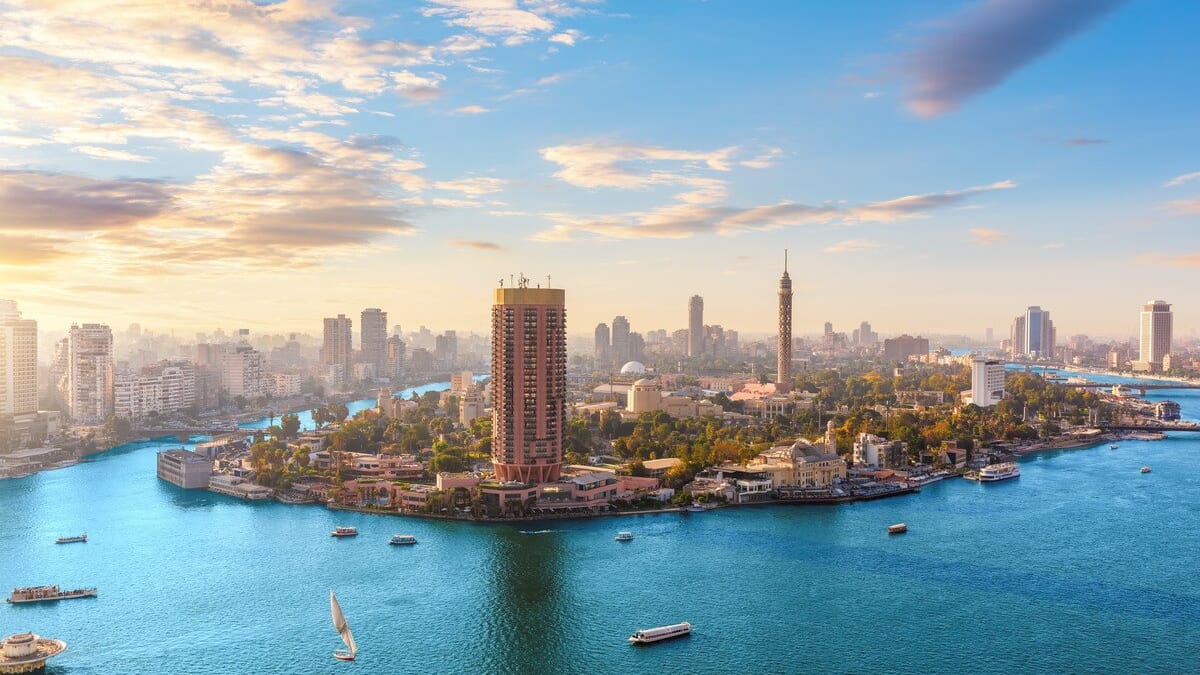
Explore Cairo, the Capital of Egypt! 26 Recommended Spots
Cairo, the capital of Egypt, is a world-class city representing the Arab nations. While many of Egypt’s historical ruins are located around Luxor in the south, it’s not uncommon for tour packages to focus solely on the pyramids and the Archaeological Museum in Cairo. However, that would be a waste! There are so many must-see places in Cairo.
In this guide, we will carefully select and present 26 recommended sightseeing spots, blending the famous landmarks found in every guidebook, more niche tourist destinations, and new spots where you can experience modern Cairo.
table of contents
[x] close
Explore Cairo, the Capital of Egypt! 26 Recommended Spots
- 1. Nile River
- 2. Tahrir Square
- 3. Cairo Tower
- 4. Downtown Cairo
- 5. Egyptian Railway Museum
- 6. The Great Pyramids of Giza and the Sphinx
- 7. The Grand Egyptian Museum
- 8. Step Pyramid of King Djoser (Saqqara Pyramid Complex)
- 9. Mastabas and Serapeum
- 10. Memphis Museum (Ruins of Memphis)
- 11. Dahshur
- 12. National Museum of Egyptian Civilization
- 13. The Citadel
- 14. Muhammad Ali Mosque
- 15. Amr Ibn al-As Mosque
- 16. Al-Rifa'i Mosque
- 17. Old Cairo District
- 18. Bayt al-Suhaymi
- 19. Abdeen Palace
- 20. Prince Mohamed Ali Palace (Al Manial Palace and Museum)
- 21. Khan el-Khalili
- 22. Al-Azhar Park
- 23. Giza Zoo
- 24. Pharaonic Village
- 25. Citystars Mall
- 26. Cairo Festival City
- ◎ Best Season for Sightseeing in Cairo
1. Nile River
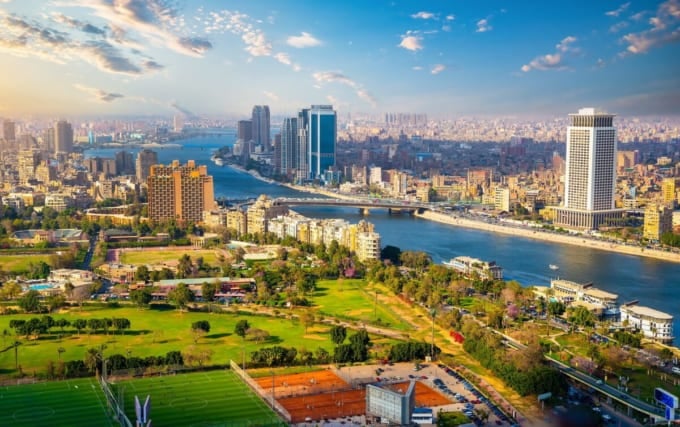
Egypt is the gift of the Nile. The world’s longest river, the Nile, flows through the heart of Cairo, with its east bank being the city of Cairo and its west bank being the city of Giza.
There are several islands within Cairo, and one of them is Zamalek, a district where many expatriates live. Along the Nile River is a promenade called the Corniche, where, especially from evening to night, you can see young people strolling or gathering to chat. There are also tourist sailboats called "felucca" and dinner cruise ships, making the nights very lively.
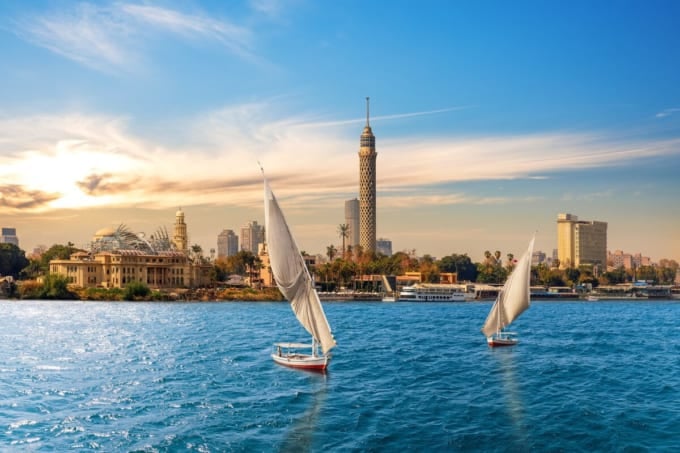
Most large hotels face the Nile River, so if you’re staying in Cairo, it's worth splurging a bit for a room with a Nile view. From your balcony, you can enjoy the luxurious sight of the Nile’s abundant waters!
2. Tahrir Square
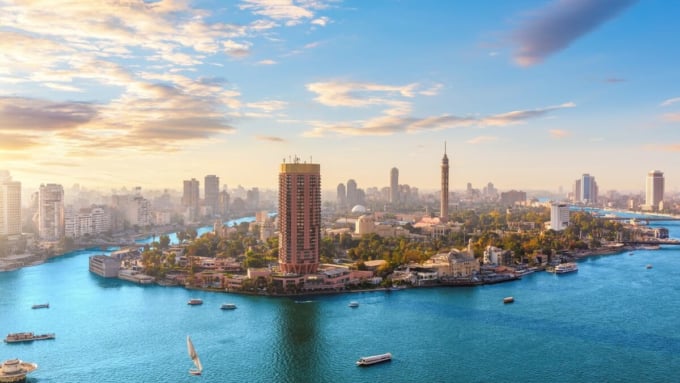
Tahrir Square, the largest square in Cairo, is located in the heart of the city, right next to the Nile River. The area is surrounded by landmarks such as the Egyptian Museum of Antiquities and large hotels, making it a place you are likely to pass by at least once during your visit.
"Tahrir" means "liberation." Tahrir Square was the center of the 2011 Arab Spring revolution. It's a place where you can experience the bustling atmosphere of Cairo, where the sound of car horns can be heard all day long. Be sure to visit at least once.
3. Cairo Tower
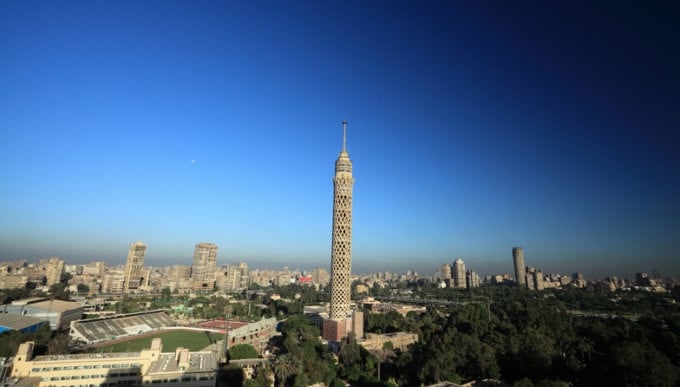
The Cairo Tower, a very popular landmark among tourists, stands at a height of 187 meters. It was built in 1961 on Gezira Island, a Nile River island.
Designed in the shape of a lotus flower, the tower is illuminated at night. If the weather is clear, you can even see the pyramids in the distance! The observation deck also has a cafeteria, so it's a great place to enjoy a drink while planning your sightseeing.
enjoy a drink while planning your sightseeing.
Name: Cairo Tower
Address: Hadayek al Zuhreya st, Cairo, Egypt
Official/related website URL: https://www.facebook.com/TheCairoTower/
4. Downtown Cairo
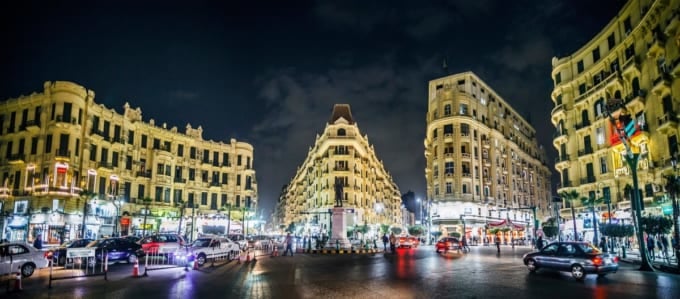
Downtown Cairo, known in Arabic as "Wust al-Balad," is the city's bustling downtown area. From large hotels to affordable inns, this place is always lively with tourists and locals. It features cinemas, restaurants, cafes, clothing stores, shoe shops, and a variety of other stores.
Why not take a stroll with a cone of ice cream from the popular local sweets shop, Abdo, like the local youth do? There are also many local cafes where Egyptian men enjoy shisha (water pipes), so it can be fun to try this experience.
Name: Downtown Cairo
Address: Cairo, Egypt
5. Egyptian Railway Museum
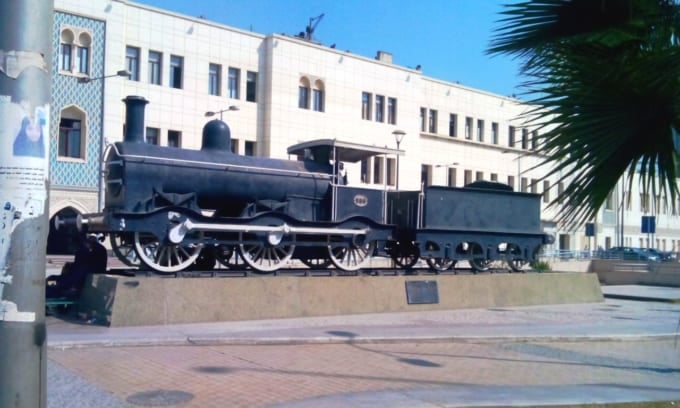
The central station in Cairo is Ramses Station. Most trains going to the suburbs depart from this station, which is always crowded. In one corner of the station, you’ll find the Egyptian Railway Museum, which recently reopened after renovations. It’s a must-visit for anyone interested in railways.
The Egyptian Railway Museum was inaugurated in 1933 to celebrate the International Railway Congress held in Cairo. It is the second-oldest railway museum in the world, after the UK's. Exhibits include documents, photos of stations in Egypt, actual items used at stations, old engines, and models of various Egyptian vehicles.
There is also a diorama with miniature trains running on tracks. This hidden gem is not widely known to tourists, so it’s worth visiting if you’re a railway enthusiast.
Name: The Egyptian Railway Museum
Address: Ramses Station, Cairo, Egypt
Official/related website URL: https://www.sis.gov.eg/Story/142949/The-Egyptian-Railway-Museum?lang=en-us
6. The Great Pyramids of Giza and the Sphinx
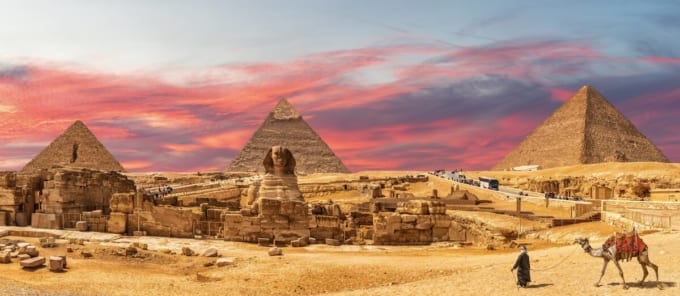
The pyramids, admired by tourists from all over the world, are part of the UNESCO World Heritage Site "Memphis and its Necropolis – the Pyramid Fields from Giza to Dahshur."
Among these, the most popular attraction is undoubtedly the Great Pyramids of Giza! These three pyramids include the largest one, built for King Khufu, followed by those for King Khafre and King Menkaure. And of course, we can't forget the Sphinx. King Khufu's pyramid was originally 146 meters tall (currently 138 meters) and was constructed using 2.7 to 2.8 million limestone blocks, each weighing 2.5 tons, a testament to the incredible engineering skills of around 2500 BCE.
The pyramids are about a 30-minute drive west of Cairo. Since entry to the pyramids is limited, it's recommended to visit early in the day.
Name: The Pyramids of Giza and the Sphinx
Address: Giza, Egypt
7. The Grand Egyptian Museum
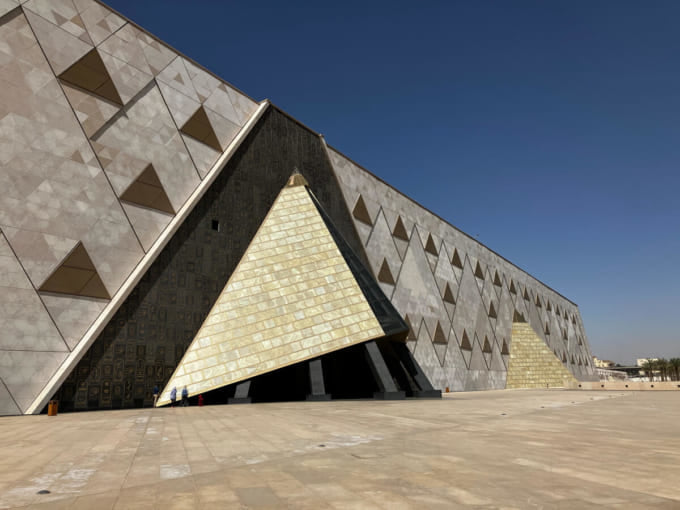
The Grand Egyptian Museum, located near the Pyramids of Giza, is the world’s largest archaeological museum, which had a pre-opening phase. It took over approximately 100,000 artifacts from the closed Egyptian Museum of Antiquities, including the "Solar Boat" that was previously exhibited in the Solar Boat Museum.
The museum, with its modern exterior, showcases a vast collection related to ancient Egyptian civilization. Among the highlights are the famous golden mask of King Tutankhamun and thousands of artifacts excavated from his tomb.
Name: The Grand Egyptian Museum (GEM)
Address: Alexandria Desert Rd, Kafr Nassar, Al Haram, Giza Governorate 3513204, Egypt
Official/related website URL: https://grandegyptianmuseum.org/
8. Step Pyramid of King Djoser (Saqqara Pyramid Complex)
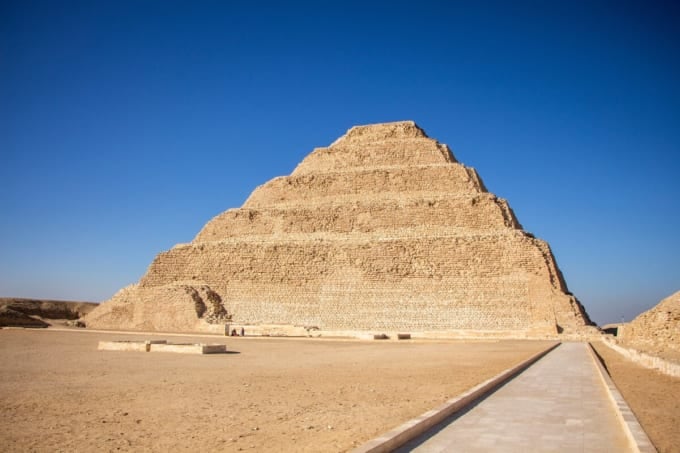
Located about 20 km south of Cairo, Saqqara was the burial site of the ancient Egyptian capital, Memphis. Numerous pyramids and tombs have been discovered there, making it a popular tourist destination.
The most famous among them is the Step Pyramid of King Djoser, the second pharaoh of the Third Dynasty. It is considered the world’s oldest large stone structure and served as the prototype for the pyramids, eventually evolving into the Pyramids of Giza. In other words, it’s the original pyramid!
Although it’s located in the suburbs, Saqqara is a must-visit site for pyramid enthusiasts.
Name: Step Pyramid of King Djoser (Saqqara Pyramid Complex)
Address: Saqqara, Egypt
Official/related website URL: https://egymonuments.gov.eg/monuments/the-step-pyramid-complex-of-djoser/
9. Mastabas and Serapeum
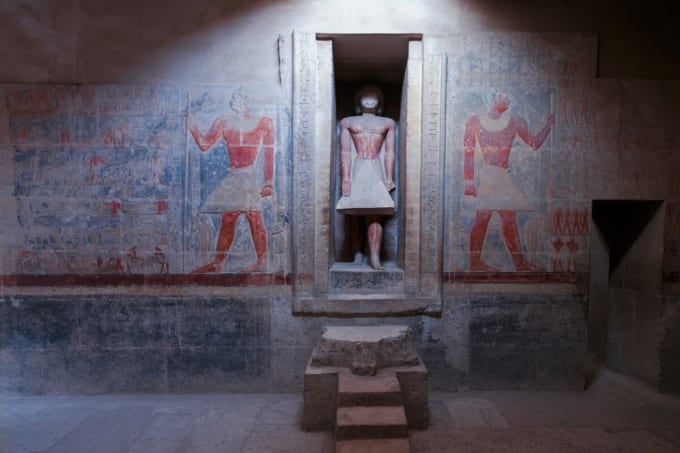
Another must-see spot in Saqqara is the collection of "mastabas," which are rectangular tombs built in ancient Egypt. Saqqara has many mastabas, and some of them can be explored inside.
Among the most notable are the Mastaba of Mereruka and the Mastaba of Ti. The Mastaba of Mereruka, with its 32 rooms, is one of the largest from the Old Kingdom and is the tomb of Mereruka, a vizier during the reign of Teti, along with his wife (Teti’s daughter) and their son.
To the west along the Sphinx-lined avenue is the Mastaba of Ti, famous for its beautifully colored wall paintings. Between these mastabas is the Serapeum, built for the sacred bull Apis. It features massive underground corridors and sarcophagi containing mummified bulls.
These mastabas and the Serapeum were closed for restoration for a long time, making them lesser-known tourist spots.
Name: Mastabas and Serapeum (Mastaba/Serapeum)
10. Memphis Museum (Ruins of Memphis)
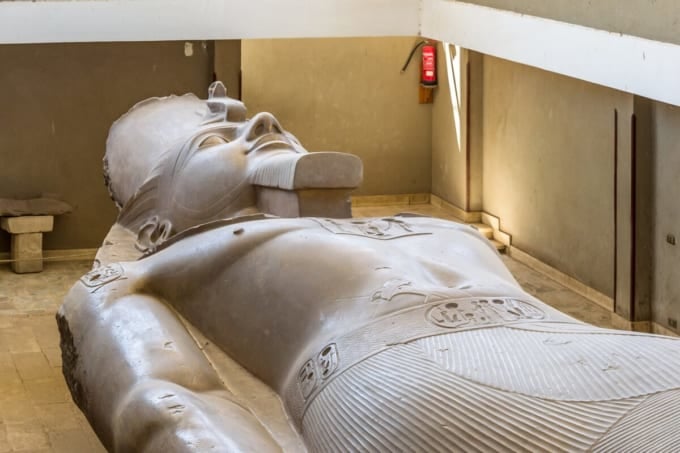
Located about 30 minutes south of Cairo by car, the area around Mit Rahina was once the capital of ancient Egypt during the Old Kingdom. Even after the capital moved to Thebes during the New Kingdom, Memphis remained the administrative center of Lower Egypt.
The main attraction in the ruins of Memphis is the Memphis Museum, home to the colossal statue of Pharaoh Ramses II. Though it's called a museum, the only exhibit is the reclining statue of Ramses II, which stands at around 15 meters tall. Visitors can view the statue from a second-floor walkway.
Take a trip to explore Memphis, a place steeped in the legacy of Ramses II.
Name: Memphis Museum (Ruins of Memphis)
Address: Memphis, Egypt
https://www.mitrahinamuseum.com/
11. Dahshur
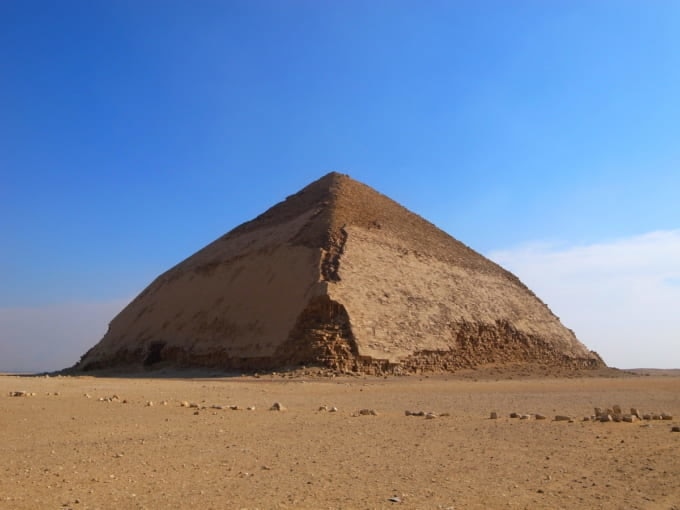
Located about 35 km south of Cairo, Dahshur is home to two pyramids attributed to Sneferu, the founder of the Fourth Dynasty and father of King Khufu. These pyramids have become popular tourist attractions, and visitors can even go inside them.
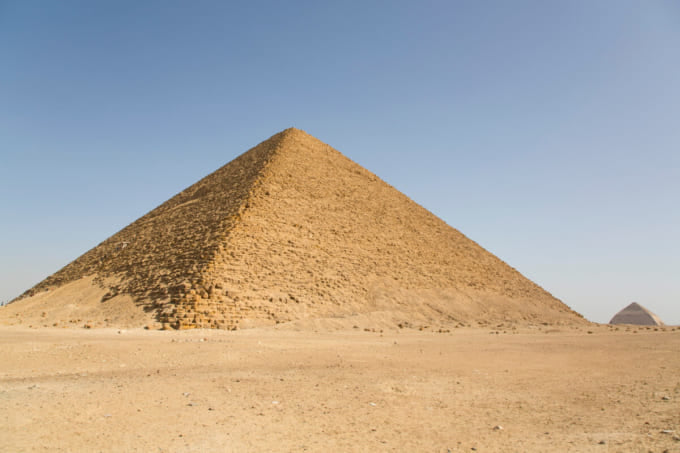
The first is the Bent Pyramid, the only pyramid with a change in slope partway up.
The second is the Red Pyramid, located slightly north. It is considered the first true pyramid. Climbing the 200 narrow steps while crouching is quite challenging, but the sense of accomplishment is worth it! Don’t forget to bring a flashlight, as the interior is dark.
Name: Dahshur
Address: Dahshur, Egypt
Official/related website URL: https://egymonuments.gov.eg/en/archaeological-sites/dahshur
12. National Museum of Egyptian Civilization
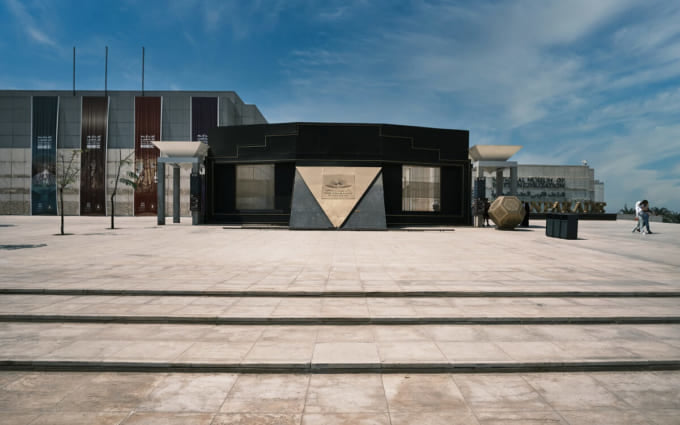
The National Museum of Egyptian Civilization, which officially opened in 2021, is a museum in Cairo that covers Egyptian civilization from ancient times to the modern era.
The museum's main highlight is the Royal Mummies Hall, where 22 mummies are housed. These mummies were transported in a grand event known as the "Pharaohs' Golden Parade." The mummies of pharaohs such as Ramses II and Queen Hatshepsut are among those on display.
The museum exhibits around 50,000 artifacts, categorized by themes such as art, technology, daily life, and religion. It offers visitors a chance to experience the cultural evolution of Egyptian civilization from ancient to modern times.
Name: National Museum of Egyptian Civilization (NMEC)
Address: Ein as Seirah, Old Cairo, Cairo 4245001, Egypt
Official/related website URL: https://nmec.gov.eg/
13. The Citadel
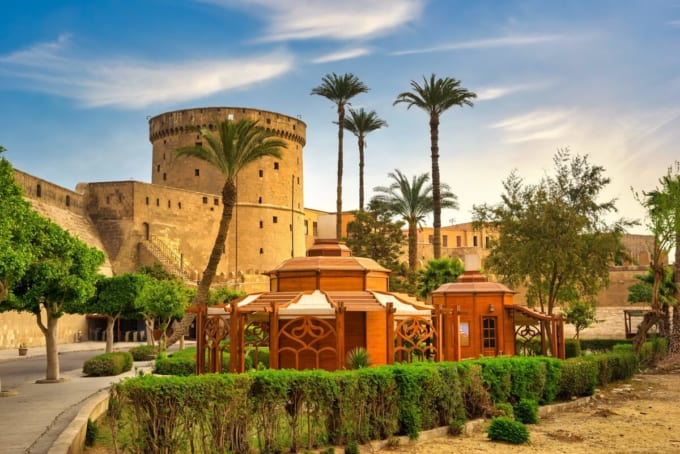
The Citadel, built by Egypt's hero Saladin in 1176 as a stronghold against the Crusaders, is located on a section of the Mokattam Hills.
Even after Saladin's death, the citadel remained a vital center of government during the Mamluk and Ottoman periods and up until the 19th century under Muhammad Ali. Within the Citadel grounds, you'll find the Muhammad Ali Mosque, a military museum, Ottoman-era buildings, and a prison from the British colonial era, among other structures.
From the Citadel’s observation deck, visitors can enjoy a panoramic view of Cairo, and on clear days, the pyramids can be seen in the distance. It is a popular tourist destination with much to offer.
Name: The Citadel of Cairo
Address: al-Qala'a, Shar'a Salih Salem, Cairo
Official/related website URL: https://egymonuments.gov.eg/ar/archaeological-sites/cairo-citadel
14. Muhammad Ali Mosque
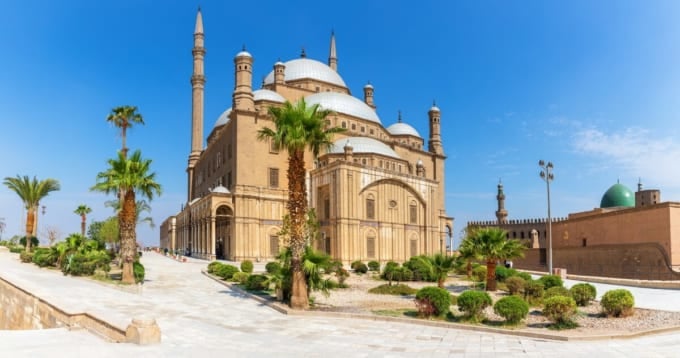
The Muhammad Ali Mosque, a typical Ottoman-style mosque, was commissioned by Muhammad Ali, who laid the foundations for Egypt’s modernization under Ottoman rule. Construction began in 1824 and was completed in 1857. The mosque is notable for its large dome and two towering minarets.
Inside, visitors are captivated by a massive chandelier weighing around one ton. While electricity powers it today, it was once lit with oil that didn’t produce soot. Another highlight is the extensive use of alabaster (gypsum) in the interior and exterior decorations.
The clock tower in the courtyard houses a clock that has long been stopped. This clock was a gift from the French government in exchange for the Luxor Obelisk, which was sent to Paris. The obelisk is now located in Place de la Concorde in Paris.
Though the mosque is always bustling with tourists as it is included in most tours, please note that it is closed to visitors during Friday prayers.
Name: Muhammad Ali Mosque
Address: al-Qala'a, Shar'a Salih Salem, Cairo
Official/related website URL: https://egymonuments.gov.eg/en/monuments/muhammad-ali-mosque
15. Amr Ibn al-As Mosque
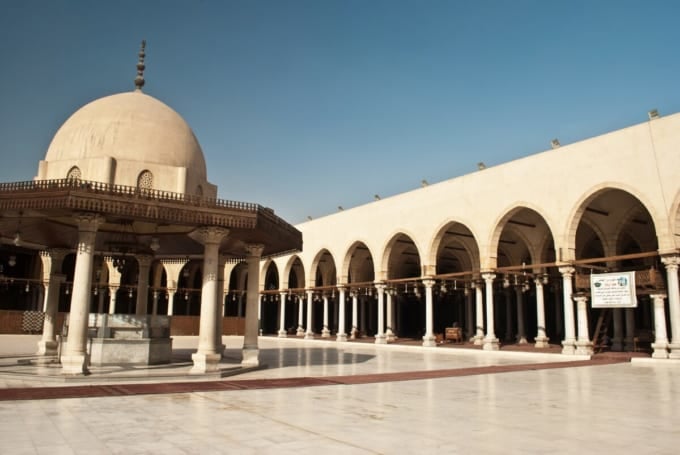
Located in Old Cairo, the Amr Ibn al-As Mosque is the oldest mosque in Egypt. It is named after Amr Ibn al-As, the general of the Arab army who conquered Egypt in 641. The mosque was built on the site where Amr’s tent stood during the siege of the Byzantine fortress of Babylon.
When first constructed, the mosque was a simple structure with a palm-leaf roof. However, as the Muslim population grew, it was expanded, and by 827, it reached its current dimensions of approximately 120 meters in length and 110 meters in width. The mosque has undergone numerous repairs due to earthquakes and fires, so most of the current structure dates back to the 18th century. Visitors are provided with hooded garments at the entrance to cover up during their tour.
Name: Amr Ibn al-As Mosque
Address: Sidey Hassan Al Anwar, Old Cairo, Cairo Governorate, Egypt
Official/related website URL: https://egymonuments.gov.eg/monuments/the-mosque-of-amr-ibn-al-as/
16. Al-Rifa'i Mosque
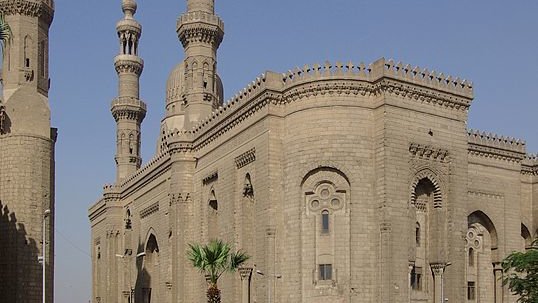
The Al-Rifa'i Mosque was built on the site of the tomb of Sheikh al-Rifa'i, founder of the Rifa'i order. Taking 43 years to complete, it is one of Cairo's largest mosques and features a design that incorporates various Islamic architectural styles.
The mosque is known for its beautifully decorated windows, a high ceiling supported by 44 massive columns, and intricate inlay work. It stands next to the Sultan Hassan Mosque and Madrasa, both grand and imposing structures, on the northern side of the Citadel Square. The combination of these two large mosques makes for a perfect photo opportunity from Citadel Square.
The Al-Rifa'i Mosque also houses royal tombs, including that of Egypt’s last king, Farouk I, and the last Shah of Iran, Mohammad Reza Pahlavi, who was buried there in 1980 after fleeing the Iranian Revolution.
Name: Al-Rifa'i Mosque
Address: El-Refaey, El-Darb El-Ahmar, El Khalifa, Cairo Governorate 4292008, Egypt
Official/related website URL: https://egymonuments.gov.eg/en/monuments/al-rifa-i-mosque
17. Old Cairo District

Old Cairo is the southern part of Cairo along the Nile River. It is the oldest part of the city, home to a large Coptic Christian community, and features several attractions, including the Coptic Museum, Greek Orthodox monasteries, and many churches. There is also a synagogue in the area.
Other notable sites include the Amr Ibn al-As Mosque, the ruins of Fustat (the original location of Cairo), and remnants from the Roman and Byzantine periods, including the fortress of Babylon.
Old Cairo is a rich tourist destination with plenty to see, and if you have time, it's worth spending a full day exploring the area. Since much of the sightseeing is done on foot, it's best to visit in the cooler morning hours during the summer months.
Old Cairo, along with the Islamic district, has been designated as a UNESCO World Heritage Site under the name "Historic Cairo."
Name: Old Cairo District (Old Cairo)
18. Bayt al-Suhaymi
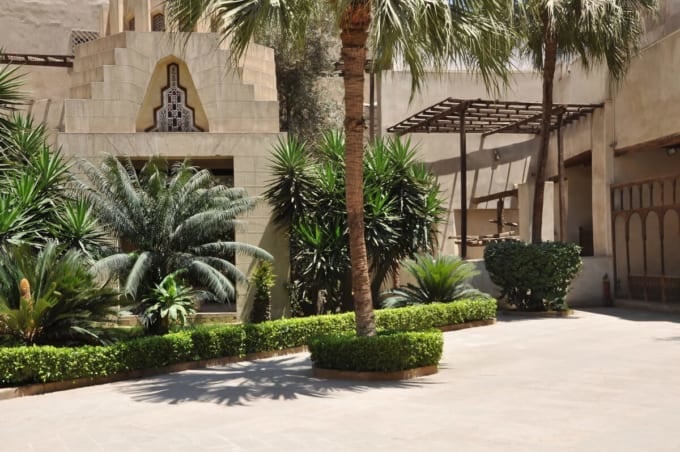
For those interested in Islamic architecture and art, Bayt al-Suhaymi is a must-visit. Originally built during the Ottoman period, this building was purchased by the Suhaymi family in the 18th century and decorated with unique designs. It is now open to the public for tours.
One of the most distinctive features is the "mashrabiya," the wooden lattice windows. All the windows facing the outer walls and courtyards are fitted with these mashrabiya, which allow those inside to see outside, but prevent outsiders from seeing inside. This feature served as a safety measure for women while also protecting against the intense summer sun and dust storms.
Other highlights include marble floors, wooden furniture, stained glass, and multiple courtyards with palm trees.
Name: Bayt al-Suhaymi
Address: Haret Al Darb al Asfar, Cairo
Official/related website URL: https://x.gd/LtcRV
19. Abdeen Palace
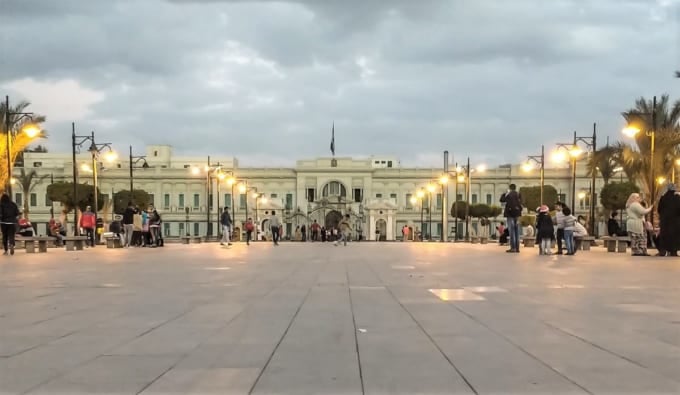
Abdeen Palace was the residence of Ismail Pasha, ruler of the Muhammad Ali Dynasty, and was later passed down to successive kings. Since the 1952 Nasser Revolution, it has been government property.
The palace's interior is lavishly decorated, featuring five rooms displaying weapons, medals, decorations, gifts from former President Mubarak, and silverware. The weapons section is particularly impressive, showcasing swords, guns, and other armaments from the 17th to 19th centuries.
These collections are unique to the palace, so if you're interested, a visit to Abdeen Palace is a must.
Name: Abdeen Palace
Address: El-Gomhoneya Square, Rahbet Abdin, Abdeen, Cairo
Official/related website URL: https://www.cairo.gov.eg/ar/Bank%20of%20Ideas/Pages/matahif-alqahra-_text.aspx?ID=15
20. Prince Mohamed Ali Palace (Al Manial Palace and Museum)
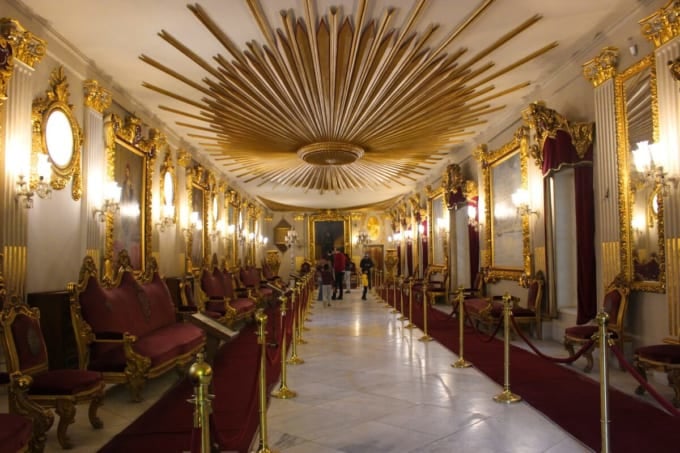
Al Manial Palace was built by Mohamed Ali Tawfiq, who served as regent for King Farouk during the Muhammad Ali Dynasty.
The palace’s interior is a harmonious blend of Ottoman Turkish Islamic architecture with Art Nouveau and Rococo decorations. Notable features include wooden staircases, a spacious entrance hall, and rooms lavishly adorned with intricate designs, making it a dream for architecture and art lovers. Don’t miss the garden, which is filled with tropical and exotic plants collected by Mohamed Ali Tawfiq as a hobby.
Name: Prince Mohamed Ali Palace / Al Manial Palace and Museum
Address: 1 Saray Street, Manyal, Cairo
Official/related website URL: https://egymonuments.gov.eg/en/museums/manial-palace-museum
21. Khan el-Khalili
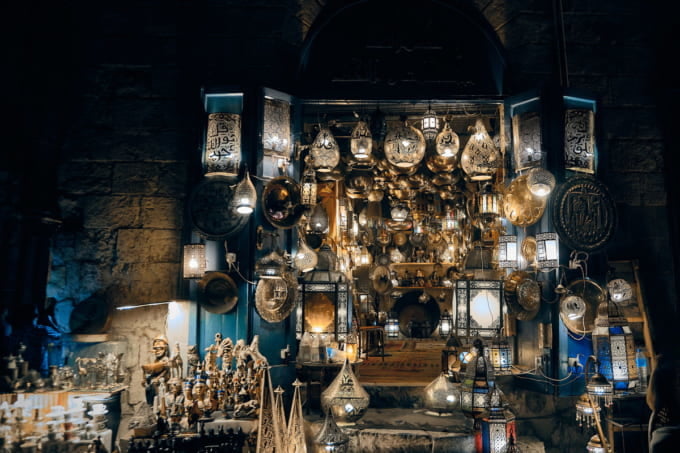
Dating back to the 14th century, Khan el-Khalili Market is renowned as the city’s artisan hub. Though the artisan quarter still exists, the market is now a bustling shopping area filled with souvenir shops, attracting tourists from around the world.
The narrow winding streets are lined with shops selling gold and silver crafts, glassware, leather goods, perfumes, papyrus, and shisha supplies—classic Egyptian souvenirs. One of the most popular items for tourists is the beautiful set of perfume bottles. Be prepared to negotiate the price!
Name: Khan el-Khalili
Address: Al-Azhar Street, Cairo
22. Al-Azhar Park
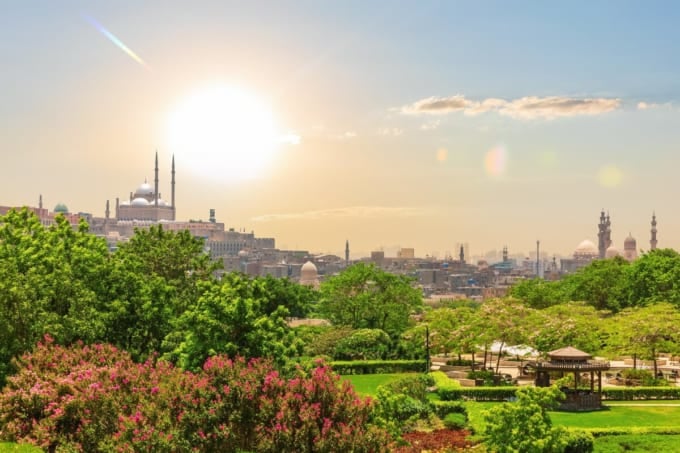
Al-Azhar Park is a paid urban oasis in the middle of Cairo, a city with few green spaces. Located on a hill, it offers panoramic views of the city from its observation deck.
The park features artificial lakes, fountains, walking paths, restaurants, and cafes, along with various plants, making it a perfect place for a relaxing stroll. It’s a great spot to visit when you need a break from sightseeing in Cairo.
The park is also a popular spot during sunset, when the view is particularly beautiful. The numerous minarets visible from the park will help you understand why Cairo is called the "City of a Thousand Minarets."
Name: Al-Azhar Park
Address: Darassa Hill, Al Darassa Hill, Cairo
23. Giza Zoo
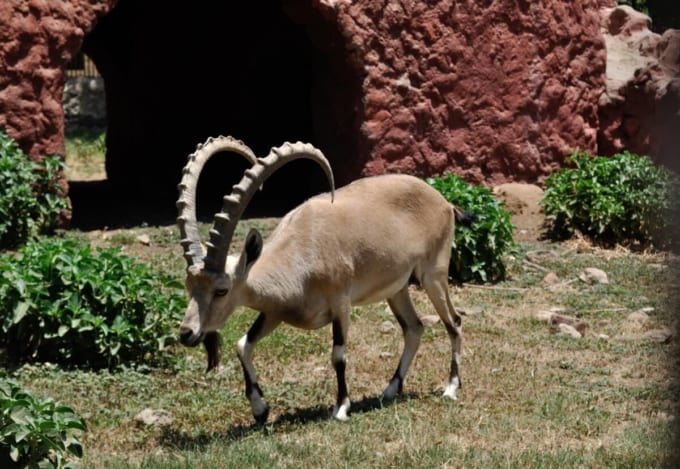
For the people of Cairo, the zoo has always been synonymous with "Giza Zoo." Opened in 1891, it has over 100 years of history. Compared to other tourist attractions, the entrance fee is relatively inexpensive, which causes the zoo to become extremely crowded during holidays.
At the animal enclosures, zookeepers often wait with food, and for a tip, they will give you carrots or lettuce to feed the animals. You can find animals that are symbolic of the African continent, such as camels and gazelles. If you’re curious about what an Egyptian zoo is like, this is a recommended spot.
Name: Giza Zoo
Address: Charles De Gaulle St., Giza
Official/related website URL: http://gizazoo.gov.eg/
24. Pharaonic Village
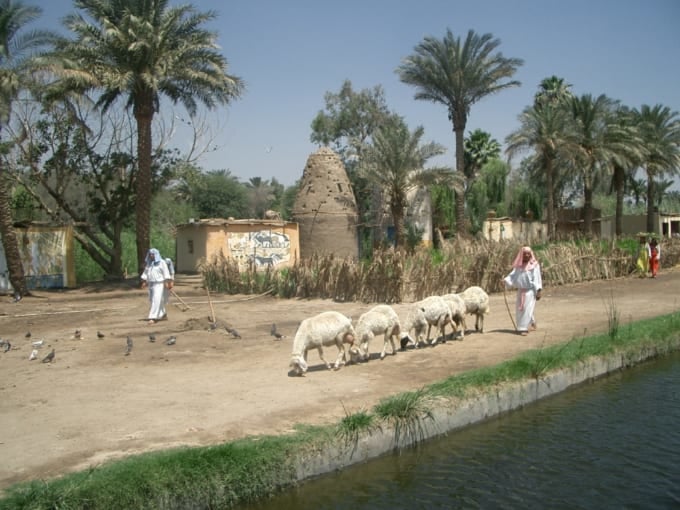
Pharaonic Village is a long-established theme park in Cairo. It recreates the lifestyle of ancient Egyptians and the Pharaohs.
Visitors take a small sightseeing boat along a canal, where they are introduced to the gods of ancient Egypt, Pharaohs, farming techniques, and the process of making papyrus, the world's oldest paper.
After disembarking from the boat, visitors can tour replicas of buildings from the Pharaoh era with the staff, including notable sites such as the Karnak Temple in Luxor and Tutankhamun's tomb. There are also sections where you can dress up in Pharaoh costumes for photos, as well as souvenir shops and restaurants. The village is a popular family destination during Egyptian holidays and summer vacations.
Name: Pharaonic Village
Address: 3 El Bahr El Aazam St., Cairo, Egypt
Official/related website URL: https://pharaonicvillage.com/
25. Citystars Mall
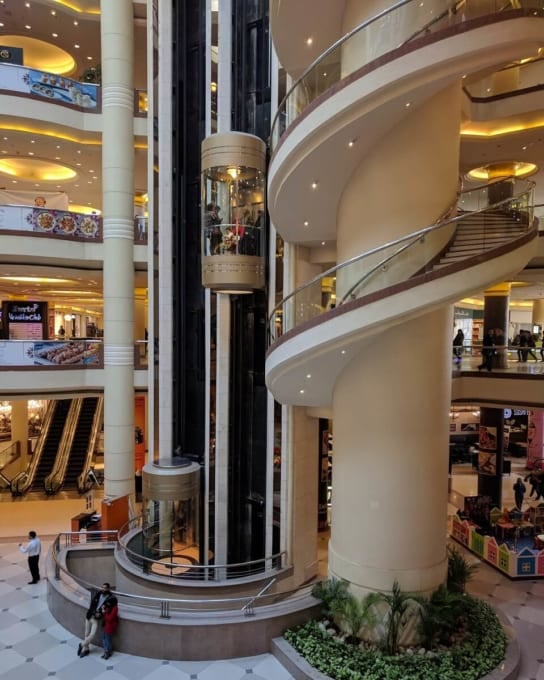
Citystars Mall is a large shopping mall located in Nasr City, in the eastern part of Cairo. With stylish cafes, authentic restaurants, and a casual food court, there are plenty of dining options, making it a place where you can shop, eat, and even watch movies for an entire day.
Located near Cairo Airport and connected to a hotel, it is always bustling with locals and tourists alike. While the Khan el-Khalili market requires bargaining for Egyptian souvenirs, Citystars Mall offers a more relaxed shopping experience for tourists.
Name: Citystars Mall
Address: Omar Ibn El-Khattab, Masaken Al Mohandesin, Nasr City, Cairo
Official/related website URL: https://www.citystars-heliopolis.com.eg/en
26. Cairo Festival City
Cairo Festival City, located in the new district of New Cairo, is a popular shopping destination featuring Egypt's first IKEA and KidZania, along with brands loved by the youth such as H&M, Marks & Spencer, and ZARA. It also has Carrefour, restaurants, food courts, and cinemas, making it the newest and most comprehensive mall in Cairo.
The name "City" is because the development plans include hotels and residential areas, with a total area of 3 million square kilometers, intended to grow into a self-sufficient city.
In the mall’s courtyard, the "Dancing Fountain" show is regularly held, where visitors can enjoy the sight of fountains dancing to music from the surrounding cafes and restaurants.
If you're looking to discover Egypt’s latest trends, this mall is a perfect place, as it hosts almost every new fashion brand, restaurant, or café debuting in the country.
Name: Cairo Festival City Mall
Address: Cairo 171-11835
Official/related website URL: https://www.festivalcitymallcairo.com/home/
◎ Best Season for Sightseeing in Cairo
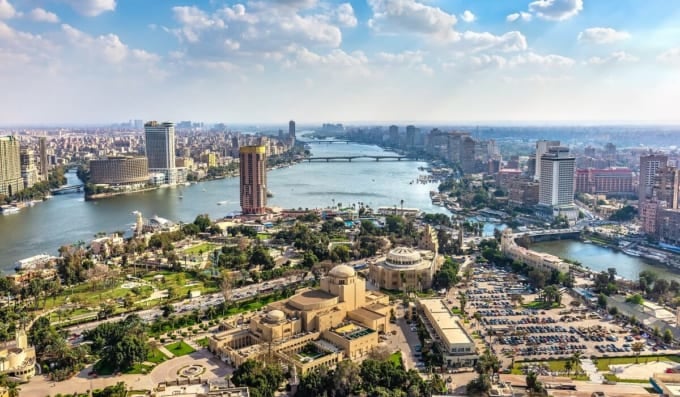
The best time to visit Egypt, and Cairo in particular, is from October to February, during the fall and winter, avoiding the hot summer and sandstorm season. While Cairo is often thought of as a hot destination, daytime temperatures during winter range from 15 to 20 degrees Celsius, making it an ideal season for sightseeing. However, it can get chilly at night, so it’s advisable to bring a jacket. Be mindful of safety, and enjoy your trip to Cairo!
RELATED ARTICLES
REGIONS
CATEGORIES
FEATURED ON Egypt
-
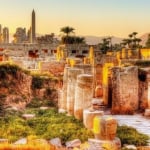
Let’s Go Shopping in Luxor, the Ancient Egyptian Capital! 4 Recommended Souvenirs
-
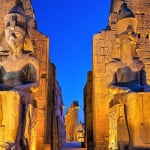
Egypt World Heritage Site | The ancient city of Thebes and its Necropolis (Luxor)
-

Egyptian Souvenirs to Buy in Alexandria, Egypt! 4 Recommended Items
-
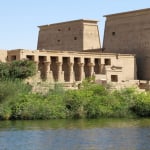
A Land of Prosperous Trade Blessed by the Nile: 12 Recommended Tourist Spots in Aswan!
-

12 Recommended Tourist Spots to Fully Enjoy Egypt | Narratives of Ancient Civilizations
MOST POPULAR ON Egypt
-
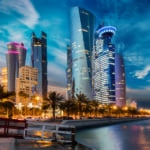 1
1Doha: Must-see Attractions in the Capital of Qatar
-
 2
2Toronto: 10 Things to do in this Picturesque Canadian City
-
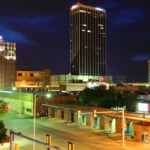 3
3Amarillo: A City Famous for It’s Amazing Canyons, Great History and Music
-
 4
4South Korea: Dazzling Scenery, Rich Culture and Fascinating History
-
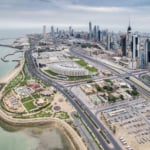 5
5Kuwait: A Country in Middle East Asia Famous for Hot Sand Dunes and Stunning Cityscape

